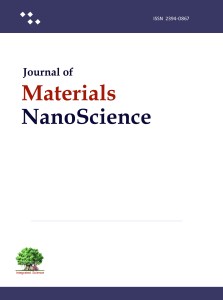 Professor S. Bhattacharya did Ph.D. from Rutgers University, New Brunswick, NJ, USA (Advisor: Prof. Robert. A. Moss) in 1988. From 1988 to 1991 he worked as Postdoctoral Research Associate at the Massachusetts Institute of Technology, Cambridge, MA, USA (Prof. Har Gobind Khorana, Nobel Laureate) and in 1991 he joined as Assistant Professor in Organic Chemistry division, Indian Institute of Science, Bangalore, India where he was promoted as Professor in 2001. He served as Chairman of department of Organic Chemistry, Indian Institute of Science from 2012 to 2015 and since April 22, 2015 he is Director and Senior Professor, Director’s Research Unit, Indian Association for the Cultivation of Science (IACS), Kolkata. India.
Professor S. Bhattacharya did Ph.D. from Rutgers University, New Brunswick, NJ, USA (Advisor: Prof. Robert. A. Moss) in 1988. From 1988 to 1991 he worked as Postdoctoral Research Associate at the Massachusetts Institute of Technology, Cambridge, MA, USA (Prof. Har Gobind Khorana, Nobel Laureate) and in 1991 he joined as Assistant Professor in Organic Chemistry division, Indian Institute of Science, Bangalore, India where he was promoted as Professor in 2001. He served as Chairman of department of Organic Chemistry, Indian Institute of Science from 2012 to 2015 and since April 22, 2015 he is Director and Senior Professor, Director’s Research Unit, Indian Association for the Cultivation of Science (IACS), Kolkata. India.
He has received numerous excellence awards such as
Ranbaxy Research Award, Pharmaceutical Sci., Ranbaxy Science Foundation 2013
Elected Fellow of the World Academy of Sciences 2012
TWAS Prize, The World Academy of Sciences, Trieste, Italy 2010
J. C. Bose National Fellowship, Department of Science & Technlogy 2008
Elected Fellow of Indian National Science Academy 2007
G.D. Birla Prize for Scientific Research, K.K. Birla Foundation 2007
Shanti Swarup Bhatnagar prize for the Chemical Sciences, CSIR 2003
National Bioscience Career Development Award, Department of Biotechnlogy 2002
Elected Fellow of Indian Academy of Sciences 2000
Swarnajayanti Fellowship, Department of Science & Technlogy 1998
He is associated with ‘Journal of Materials NanoScience‘ as Editorial Advisory Board Member since 2014. The journal link is http://www.pubs.iscience.in/journal/index.php/jmns





 Dr. Brijesh Rathi,
Dr. Brijesh Rathi, Carmela Saturnino
Carmela Saturnino